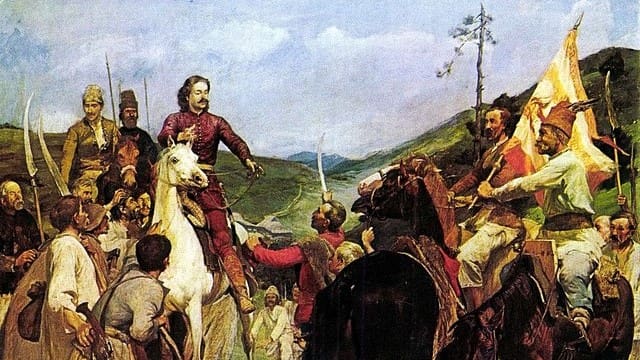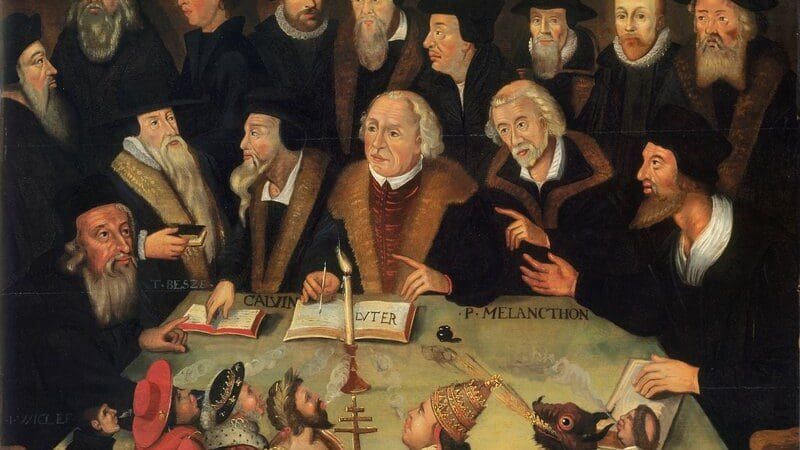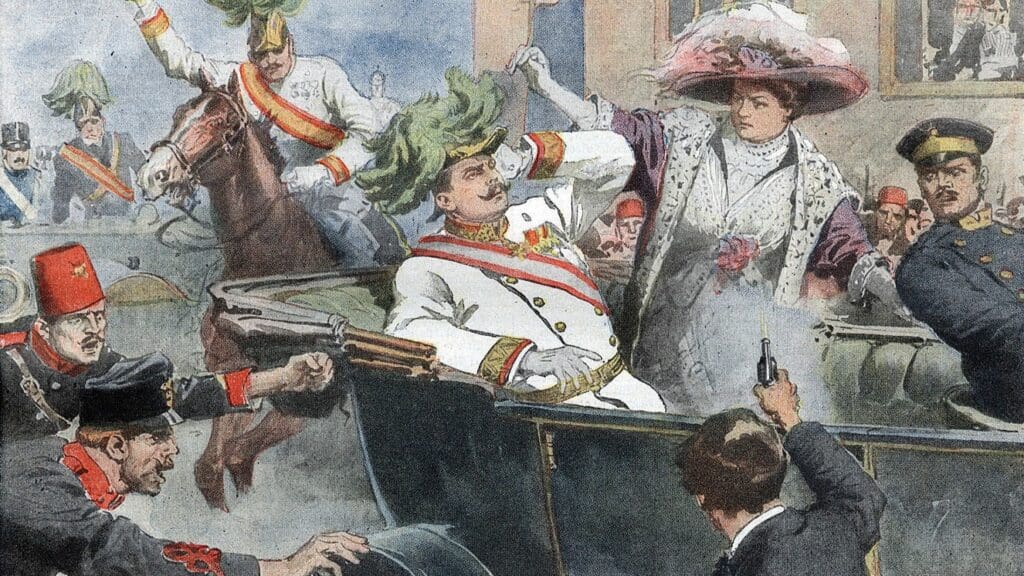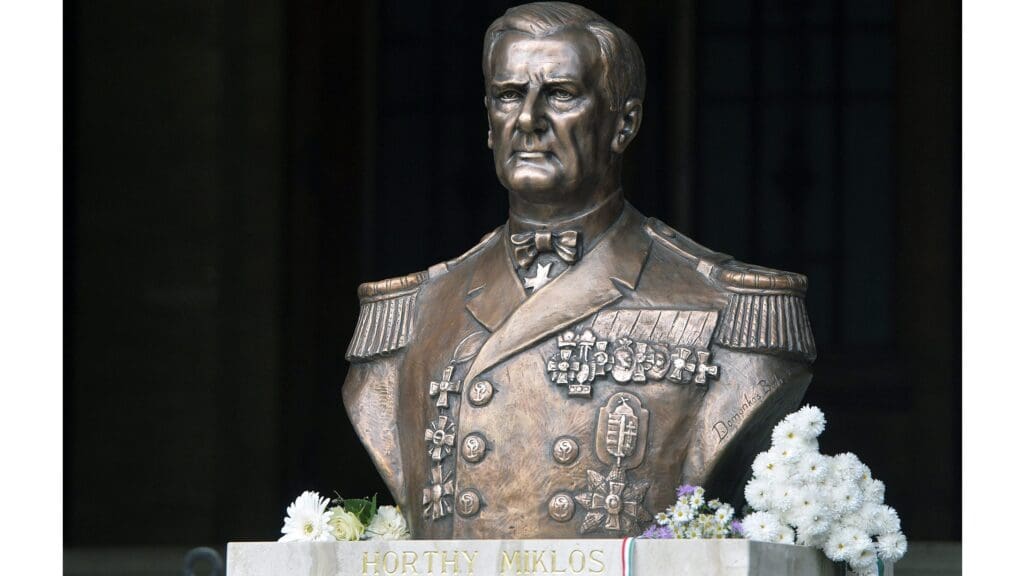




‘The inconclusive referendum held a few years after the millennium is still a blot on Hungarian social life. Thanks to a section of the Hungarian political elite of the time and a large number of misguided voters, that day became a day of national betrayal.’

Protestants played an irreplaceable role in the formation of Hungarian literary language, as well as in the renewal of the language. It is no coincidence that Ferenc Kölcsey, who wrote the Hungarian National Anthem in 1823, was a student at the Reformed College in Debrecen for many years, just as it is no accident that it was in the same Debrecen, known as the Calvinist Rome, that the Hungarian National Assembly—headed by Lajos Kossuth, who hailed from a Lutheran small noble family—proclaimed the dethronement of the House of Habsburg on 14 April 1849.

On the eve of Reformation Day we are publishing the last instalment of our eight-part series on how the garments worn by Calvinist pastors evolved over the past five hundred years. Part VIII looks at the types of garments worn by Protestant ministers between the interwar period and the present day.

‘Klebelsberg believed that “today it is not the sword but culture that can keep the Hungarian homeland alive and make it great again”, and he considered it important not only to educate the Hungarian elite but also to develop the education of the people. Legislation published in 1926 provided for the construction of 3,500 new classrooms and 1,750 teachers’ dwellings, in the following order: first, in isolated rural districts without schools, then in villages without schools, and finally in overcrowded urban schools.’

The question of what kind of apparel Reformed ministers should wear was still not fully resolved by the beginning of the 20th century. A weekly titled Lelkészegyesület (Clergy Association), launched in 1908, dedicated twenty-five articles, announcements, appeals, and comments to this topic in its first issue.

István Horthy, the son of Miklós Horthy, lost his life in a plane crash on the Russian front barely six months after he was elected Vice Regent of Hungary.

Following Hungary’s defeat in the First World War, the victors’ intentions were clear concerning our country: to impose punishments that would result, if not in the short term but in the long term, in the total disappearance of the former Central European superpower…The pain caused by Trianon and the desire to do something about it prompted Nándor Urmánczy, the ‘uncompromising Hungarian’ and a member of parliament of Transylvanian origin, to initiate and announce the National Flag Movement in 1925.

Two important events played a role in Rákóczi’s return to Hungary in 1703. On the one hand, the unfolding War of the Spanish Succession (1701–1714), which meant the withdrawal of most of the imperial regiments from the country, and on the other, the uprising of the serfs of Munkács, provided the perfect opportunity for Rákóczi to organize an armed rebellion. At the request of Tamás Esze, the leader of the uprising in the Tiszahát region, Francis II Rákóczi took the lead in the what developed into a War of Independence, issuing a proclamation calling on nobles and non-nobles alike to take up arms.

At the beginning of the 19th century, the idea of unification between the Roman Catholic and Protestant Churches came to the fore, and Protestants who sympathized with this idea tried to make it even more visible to the public by wearing clothing similar to the cassock worn by Roman Catholic priests.

‘The ideological models that had emerged at the turn of the eighteenth and nineteenth centuries…had transformed social thinking and humanity’s view of the world to such an extent that it was impossible to maintain and preserve the earlier, semi-feudal Europe. This in turn meant that ethnicity and nationality, previously considered less significant elements…became a determining factor, leading not only to an exploration of the historical past of a given community, in the search for national heroes, but also to a demand for political unification with ethnic or linguistic compatriots within a single country.’

‘On 10 March this year, the author of these lines has only one wish: that a miracle may happen in the modern, so-called democratic Romania, and it may become like it was in the 1950s, or even like in the medieval Kingdom of Hungary, in the 13th and 16th centuries. Because, if that happened, it would give freedom and autonomy to Szeklerland as in a true 21st-century European—and a European Union—country…’

In the struggle for survival and existence of Protestants, the question of ministers’ clothing still remained an issue—the meetings of the Reformed church districts of the time continued to fight against excesses.

The second half of the 17th century was a time of great hardships for Protestants: Protestant church history calls the years between 1671 and 1681 the ‘decade of mourning’. Thanks to some illustrated works by pastors freed from galley slavery, however, we can get some idea of what the preachers wore in those days.

Although the unification made the dream of the Romanians come true, the aspirations of Transylvanian Hungarians for self-determination were ignored. The annexation of Transylvania to Romania was finally enshrined by the Treaty of Paris.

Although the synods, as we have seen above, have sought to act against excesses in the clothing of preachers, several sources attest that, in many cases, it was the deacons who had to discourage pastors from the temptations of fashion.

There are few sources to help us form an idea of what the garments of 16th century Hungarian Reformed pastors may have looked like. But there are some valuable artworks that provide important hints.

The question of what garments Protestant preachers should wear was a constant topic of the synods held in the 1500s, and all the articles, canons and law books attempted to make it unequivocally clear that pastors should perform their duties in ‘decent, regular, modest’ clothing.

For generations, the heroic deeds of the defenders of the Eger Castle have given the Hungarian people strength and fortitude. Although the area under Ottoman occupation expanded and, in the following years, the Sultan managed to reassuringly stabilize his presence in the Carpathian Basin, our predecessors could draw strength from the example of Dobó and his army in later years.

Miklós Horthy de Nagybánya, former Regent of the Kingdom of Hungary, died in exile in Portugal in 1957 and was buried there. One of his last wishes, however, was for his ashes to be brought home once his beloved country was liberated from Soviet occupation.

The Habsburg Court regarded Protestantism simply as the ideological expression of the nobility, that is, the ‘spirit of rebellion’. In addition, it was part of the absolutist thinking of the era that only a mono-religious country could be politically united.

The half-century of Loránd Eötvös’ active years not only reflects the incredible intellectual richness of a single human life but has also left an indelible mark on the history of science, education, and the entire cultural life of our country.

István András Kiss spent many years playing for the Kolozsvár (Cluj) team CFR; he even won the national youth league with their youth team in 1985. In this interview he speaks about what it was like to be an ethnic Hungarian football player in Communist Romania, where ‘class warfare and chauvinism could easily co-exist’.

‘Governor Lajos Kossuth thanked General Guyon for his victory in a letter, writing: “Please accept my and the homeland’s gratitude for your victory won on 14 July. I am looking forward to the rest of your generalship with hope, since where such a brave army is commanded by Guyon with the heart of a lion, nothing but victory can follow.”‘

It has been 174 years since Major Pál Vasvári and his Rákóczi Free Army were massacred near Havasnagyfalu (today Mărișel in Romania), on 6 July 1849. Despite all resistance forces, the memory of the young revolutionary and his fellow martyrs is a powerful cohesive force for the dwindling Hungarian community of the Kalotaszeg (Țara Călatei) region to this day.

The purpose of Cum hiis superioribus annis, a papal bull issued by Pope Callixtus III in 1456, was to exhort Christians to pray, as the success of the Hungarian crusader army against the Turks was key for the future of Christian Europe at the time. To this day, the noon bell tolls every day to remind us that, as so many times in history, the Kingdom of Hungary stood up valiantly and proved itself one of the bulwarks of Christian Europe.

On 28 June 1914, 109 years ago today, at around 11 o’clock in the morning, a 20-year-old anarchist assassin, Gavrilo Princip, fired several shots at the Archduke of the Austro–Hungarian Empire and his wife. The Sarajevo assassination became the casus belli for the ‘Great War’, as it was called back then, i.e., the First World War.

27 June is the Day of Hungarian Border Guards. The geographic location of our country and the very fact that it is the eastern bulwark of Western Christianity obliged it in the past and is still predestining it today to be one of the guardians of European civilisation and the peace of the continent.

The Treaty of Vienna, ending the Bocskai uprising, known in Hungary as Bocskai’s War of Independence, was signed 417 years ago today, on 23 June 1606. The agreement ensured (at least in principle) the sovereignty of Transylvania against the Habsburgs in the long term and guaranteed the free religious practice of Protestants.

On 18 June 1868, 155 years ago today, Hungarian admiral Miklós Horthy de Nagybánya was born in Kenderes, Austria-Hungary. One of the greatest Hungarian statesmen of the 20th century served as the Regent of the Kingdom of Hungary between 1 March 1920 and 16 October 1944.

According to poet and politician József Bajza, the Teleki House was a true bastion of the Hungarian language, which was in danger of erosion at the time. For his political activities, his role in improving public education, and his efforts in advancing Hungarian culture, Sámuel Teleki should be regarded as one of the greatest Hungarian figures in 18th–19th century Transylvania.